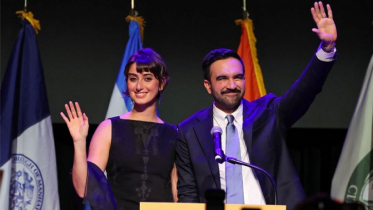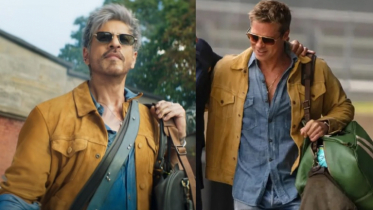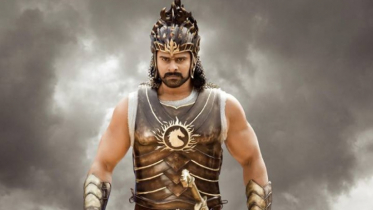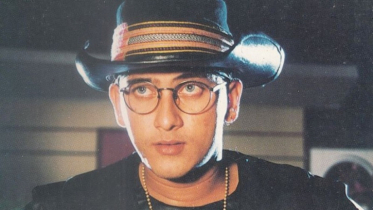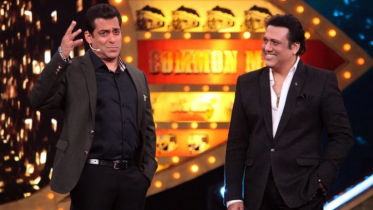Trump as ‘demon’ at India’s Durga Puja pavilion—why such a symbolic presentation?

Published : 23:15, 9 October 2025
Goddess Durga sits on the back of a lion. Her ten hands are adorned with weapons found in the gods. But her target is not the familiar Mahishasura; she is targeting a different form of ‘demon’, who is shown as a symbol of evil forces. The statue has golden hair on its head, a slender body, and a facial expression similar to US President Donald Trump.
This sculpture in the form of a demon was unveiled last week during the Durga Puja festival of the Hindu community in the Indian state of West Bengal. Its symbolic message was impossible to ignore.
Sanjay Basak, a member of the Durga Puja organizing committee in Murshidabad, told CNN, “Earlier, India and the US had good relations. However, since Trump came to power, he has been trying to suppress India, to drag us down. So we have shown Trump as this demon, who has been defeated by the powerful mother Durga.’
During the five-day Durga Puja festival, the entire city becomes like an open-air art exhibition. Here, the mythological battle between Goddess Durga and her demon is reenacted. This reflects recent concerns and issues.
Over the years, Durga Puja pavilions in India have been seen highlighting various issues, from the migrant crisis to the war with neighboring Pakistan.
Sushovan Sircar makes reels on Bengali culture on social media. He travels to New Delhi and Kolkata. Sushovan said that after 9/11, Osama bin Laden was a popular topic.
After the deadly clash on the border with China in 2020, a pavilion showed Chinese leader Xi Jinping in the role of a villain. And continuing that trend, Trump is now presented as a demon in a pavilion.
The situation was not always like this
Six years ago, Trump held hands with Indian Prime Minister Narendra Modi at Houston's NRG Stadium. The 50,000 people present there expressed their excitement for the two right-wing leaders.
That rally is known as 'Howdy Modi!'. The same scene was then seen again at the 'Namaste Trump' event held in Ahmedabad, Gujarat.
However, after Trump came to power for a second term, their friendship has been put to the test.
Earlier this year, Trump publicly disparaged New Delhi. He called India's economy 'dead'. He imposed high tariffs (50 percent) on the country's imports.
Half of that 50 percent tariff was imposed as punishment. Trump imposed the high tariff because India increased its oil purchases from Russia even after Russia's attack on Ukraine.
India has called Trump's decision to impose tariffs "unfair" and "unreasonable." The United States and Europe still trade fertilizers and chemicals with Russia.
However, the Trump administration has taken a hard line. In August, a White House official called Russia's war "Modi's war." Pressure has been put on New Delhi to reduce economic ties with the Kremlin.
India has repeatedly expressed its position in favor of buying Russian oil. It has supported and called the comment "wrong and misleading."
Then, last September, Trump suddenly ordered a $ 100,000 fee for H-1B visas. Many called it a personal attack targeting Indians. Because Indians were the biggest beneficiaries of the H-1B program.
“By portraying Trump as a demon, a political message is being conveyed to the people visiting the pavilion and the media reporting on it,” said Tunir Mukherjee, a resident of Kolkata.
According to Tunir Mukherjee, this mix of art and politics is a feature of Bengali culture. It sends a simple but powerful message. That is, Trump and his administration’s ‘backward policies’ have become the demons of the modern era. Goddess Durga must slay this demon.
Sanjay Basak, a member of the organizing committee of the puja mandap where Trump is portrayed as a demon, said that their team worked in almost complete secrecy for three months. This was done deliberately to create attraction before the unveiling of the mandap.
When the video was released online after the unveiling of the mandap, there was a surprising reaction. Basak said that thousands of people thronged the mandap, with long lines of people forming in the surrounding areas.
A tradition of protest in West Bengal
Art in West Bengal has never been just a matter of adornment or decoration. Rather, it has been a language of dialogue, a tool of protest, and even a major medium of social and political debate. As a center of resistance against the British colonialists, the Bengali War of Independence was fought as much through weapons as through thought and ideas.
Poet and novelist Bankim Chandra Chatterjee composed the poem ‘Vande Mataram’ in the 1870s, which later became an important symbol of India’s independence movement.
This deep political consciousness did not die down after independence. It was further institutionalized during the more than 30 years of rule of the local Communist Party.
For Bengalis in West Bengal, Durga Puja is now not just a religious festival; it is also a medium of public dialogue and socio-political criticism.
"This kind of criticism is part of our culture," said Basak, a member of the organizing committee involved in the creation of the Trump statue.
According to Basak, Trump's continued imposition of tariffs is the biggest problem right now. And, therefore, it is logical to present it this way.

.png)
.png)
